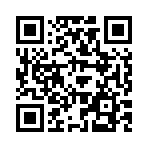Archetypes
An archetype is a template for new content.
Build options
Build options help define how Hugo must treat a given page when building the site.
Comments
Hugo ships with an internal Disqus template, but this isn't the only commenting system that will work with your new Hugo website.
Content adapters
Create content adapters to dynamically add content when building your site.
Content formats
Create your content using Markdown, HTML, Emacs Org Mode, AsciiDoc, Pandoc, or reStructuredText.
Data sources
Use local and remote data sources to augment or create content.
Diagrams
Use fenced code blocks and Markdown render hooks to include diagrams in your content.
Front matter
Use front matter to add metadata to your content.
Image processing
Resize, crop, rotate, filter, and convert images.
Markdown attributes
Use Markdown attributes to add HTML attributes when rendering Markdown to HTML.
Mathematics
Include mathematical equations and expressions in Markdown using LaTeX markup.
Menus
Create menus by defining entries, localizing each entry, and rendering the resulting data structure.
Multilingual
Localize your project for each language and region, including translations, images, dates, currencies, numbers, percentages, and collation sequence. Hugo's multilingual framework supports single-host and multihost configurations.
Organization
Hugo assumes that the same structure that works to organize your source content is used to organize the rendered site.
Page bundles
Use page bundles to logically associate one or more resources with content.
Page resources
Use page resources to logically associate assets with a page.
Related content
List related content in "See Also" sections.
Sections
Organize content into sections.
Shortcodes
Use embedded, custom, or inline shortcodes to insert elements such as videos, images, and social media embeds into your content.
Summaries
Create and render content summaries.
Syntax highlighting
Add syntax highlighting to code examples.
Taxonomies
Hugo includes support for user-defined taxonomies.
URL management
Control the structure and appearance of URLs through front matter entries and settings in your site configuration.
